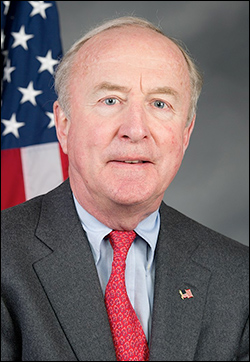By Jim Ellis

New Jersey congressional districts
The Democratic “blue wave” included defeating two sitting Republican incumbents, then-Reps. Tom MacArthur and Leonard Lance, and converting two more open seats, those from which Reps. Frank LoBiondo and Rodney Frelinghuysen retired. Now, the GOP strives to make a comeback.
New Jersey congressional candidates completed their filings earlier this week, thus giving us an introduction as to who will become party nominees in the June 2 primary. The state is again shaping up as one of the most important within the US House election prism.
Since the election, former Democratic state senator Jeff Van Drew, who was elected to replace retiring Rep. LoBiondo in the Atlantic City/Cape May CD, decided to switch parties largely because of the way the Democratic leadership ostracized him for opposing President Trump’s impeachment.
Additionally, the state Republican leadership has maneuvered well, convincing two credible candidates willing to oppose strong Republicans to turn their attention toward Democratic incumbents in nearby districts. This puts more seats in play and unifies the minority party behind all of the viable candidates they are putting forth.
Looking ahead, Reps. Donald Norcross (D-Camden City), Frank Pallone (D-Long Branch/Perth Amboy), Albio Sires (D-West New York), Bill Pascrell (D-Paterson), Donald Payne Jr. (D-Newark), and Bonnie Watson Coleman (D-Ewing Township/Trenton) are secure for re-election.





